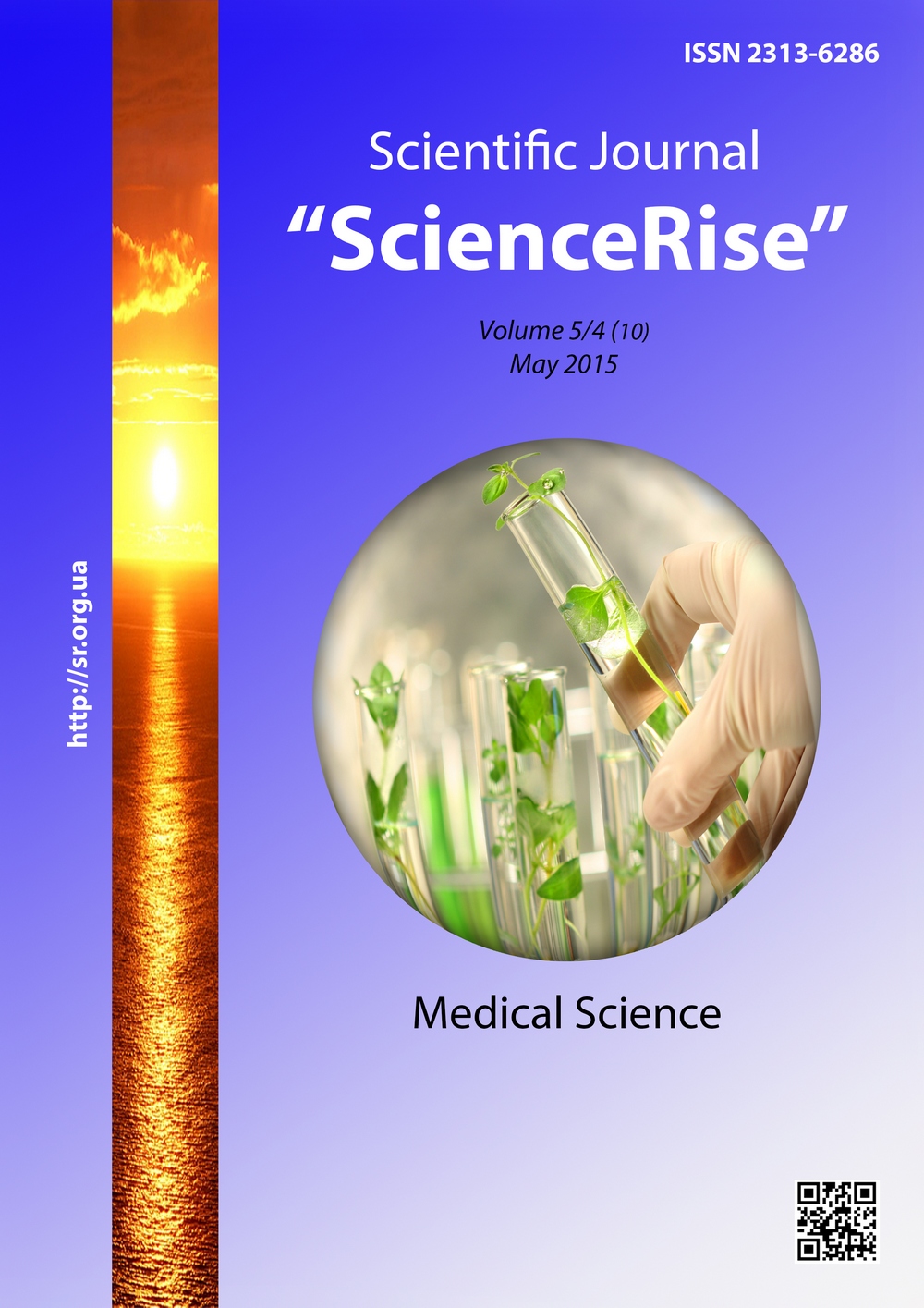Problems of diagnosis and treatment of echinococcosis
DOI:
https://doi.org/10.15587/2313-8416.2015.42974Keywords:
echinococcosis, instrumental methods of examination, surgical treatment of echinococcosis, echinococcosis therapeutic treatmentAbstract
The lack of specificity of clinical and laboratory manifestations of echinococcosis allocates to the fore diagnostic tool methods of research, which are at present leading in identifying the disease.
The widespread introduction into clinical practice of modern highly informative instrumental methods such as ultrasonography (US) and computed tomography (CT), significantly improved the early detection of liver echinococcosis. In conjunction with the serological reactions to echinococcosis they allow in most cases the diagnosis of the disease. However, false-negative results of serological tests in more than 10–20 % of the patients and the difficulty of differential diagnosis with small brush size and "pseudotumoral" forms of ultrasound often lead to delayed diagnosis, and thus to a deterioration of treatment results. Moreover, failure to identify at an early stage of echinococcosis virtually eliminates the possibility of conservative treatment of echinococcosis without performing surgery.
It is given the profound immune disorders in patients with echinococcosis, treatment should be complex and along with the surgical removal of hydatid cyst should be included in it and biostimulating. Immunocorrecting lechebnye event. Recent require further development.
Methods. The work is based on an analysis of 25 cases operated on echinococcosis in the period from January 2013 to December 2014. To confirm the diagnosis using tools (ultrasound, computed tomography, X-ray), serology (detection of antibodies to echinococcus ELISA), histological (after removal of cysts) methods. The data are processed by the method of variation statistics.
Results. An analysis of 25 cases of echinococcosis showed that among the 15 cases dominated by women (60 %) versus 10 (40 %) men. Treatment – removal of cysts of 25 patients with echinococcosis is made surgically. Among the analyzed cases in 6 (20.4 %) patients had the relapsing form of the disease. The factors leading to relapse of the disease are saved in the patient's body small residual cyst, inaccessible modern instrumental methods of diagnosis; preservation of fibrous tissue capsule and pericystic embedded germ cells that can transform into the cyst; seeding germ elements during the operation. Relapses of the disease usually associated with the colonization of the abdominal cavity with the cysts rupture, incomplete removal of the child bubbles, technical errors in surgery. Therefore, one of the most pressing issues is the chemoprophylaxis echinococcosis recurrence after surgical treatment.
Conclusion. The difficulties caused by polymorphism of clinical diagnosis of symptoms and the lack of adequate diagnosis. Frequent recurrence of echinococcosis (20.4 %) after surgery indicates the need for preventive treatment of disease
References
Kolodina, O. A. (2006). Geography of Orenburg region. Population and economy: Textbook. Orenburg Orlit-A, 144.
Shalimov, A. A., Grubnik, V. V., Tkachenko, A. I. (2002). Features infection control in the treatment of echinococcosis. Infection Control, 2, 20–23.
Shangareyeva, A. D., Gumerov, A. A., Ishimov, S. S. (2006). Diagnosis and surgical treatment of lung hydatidosis in children. Pediatric Surgery, 4, 5–9.
Pulatov, A. T. (2003). Multiple hydatid disease of the abdominal cavity in children. Pediatric Surgery, 3, 45–48.
Voros, D., Kalovidouris, A., Gouliamos, A., Vlachos, L., Danias, N., Papadimitriou, J. (1999). The Real Incidence of Extracapsular (Satellite) Cysts of Liver Echinococcus. HPB Surgery, 11 (4), 249–252. doi: 10.1155/1999/62751
Akhmedov, I. G. (2003). Recurrence of hydatid disease : pathogenetic aspects, prevention, early diagnosis and treatment. Surgery Journal, 4, 52–57.
Shangareyeva, A. D., Gumerov, A. A., Ishimov, S. S. (2007). Diagnosis and surgical treatment of liver ehinokokkoza children. Bulletin of Surgery, 1, 44–50.
Sonin, M. D., Bessonov, A. S., Roitman, V. A. (1995). Wednesday metropolis Moscow and parasitic contamination problems. Medical Parasitology and parasitic diseases, 3, 3–7.
Toledo, C. I., Armas, F., De Castillo, A. (1994). Parasite contamination of parks and gardens a public health problem. Data of the island of Tenerife. Rev Sanid. Hyg. Public Madr., 68, 617–622.
Dadvani, S. A., Shkrob, O. S., Lotov, A. N. (2000). Treatment of hydatid echinococcosis. Surgery, 8, 27–32.
Downloads
Published
Issue
Section
License
Copyright (c) 2015 Тунзала Али кызы Велиева

This work is licensed under a Creative Commons Attribution 4.0 International License.
Our journal abides by the Creative Commons CC BY copyright rights and permissions for open access journals.
Authors, who are published in this journal, agree to the following conditions:
1. The authors reserve the right to authorship of the work and pass the first publication right of this work to the journal under the terms of a Creative Commons CC BY, which allows others to freely distribute the published research with the obligatory reference to the authors of the original work and the first publication of the work in this journal.
2. The authors have the right to conclude separate supplement agreements that relate to non-exclusive work distribution in the form in which it has been published by the journal (for example, to upload the work to the online storage of the journal or publish it as part of a monograph), provided that the reference to the first publication of the work in this journal is included.

